The Asian hornet threat – Tales from Ascot, Jersey and Galicia
A talk to EDBK by Stephen Fleming, co-editor of Bee Craft
Thursday January 12th, 2023. 30+ attendees
Stephen has been keeping bees for 29 years and, as co-editor of Bee Craft, has travelled to many places to report on the depredations of the Asian hornet, the effects on our bees and what is being done to mitigate these effects.
Invasive species in Europe
To put things in perspective, the Asian hornet is only one of thousands of exotic species in Europe at the present time.
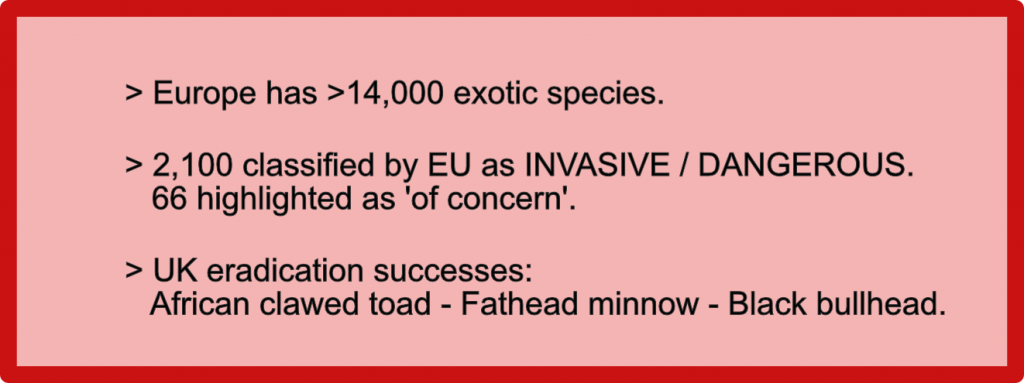
Vespa velutina
Vespa velutina nigrithorax, the Asian hornet, sometimes called the Yellow legged hornet, was accidentally imported into south west France from eastern China, sometime in 2003/2004. It is thought that a single fertilised female stowed away in a consignment of pottery. Once established, it quickly spread and was first sighted by Jean Haxaire on fruit at a market in Lot-et-Garonne , South West France, in 2004. By 2012 it had spread to most of the western parts of France as far north as Saint-Malo!
Jersey was invaded in August 2016 and the first confirmed sighting in the UK was at Tetbury in Gloucestershire in September the same year.
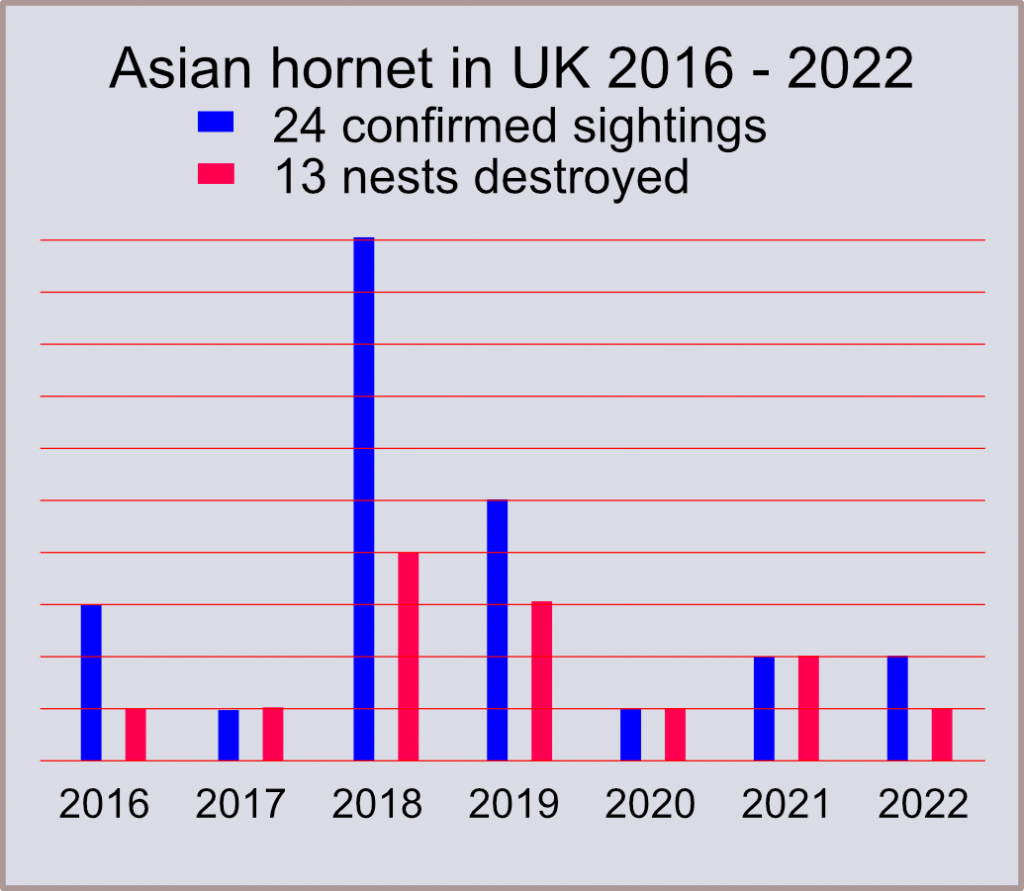
Life Cycle
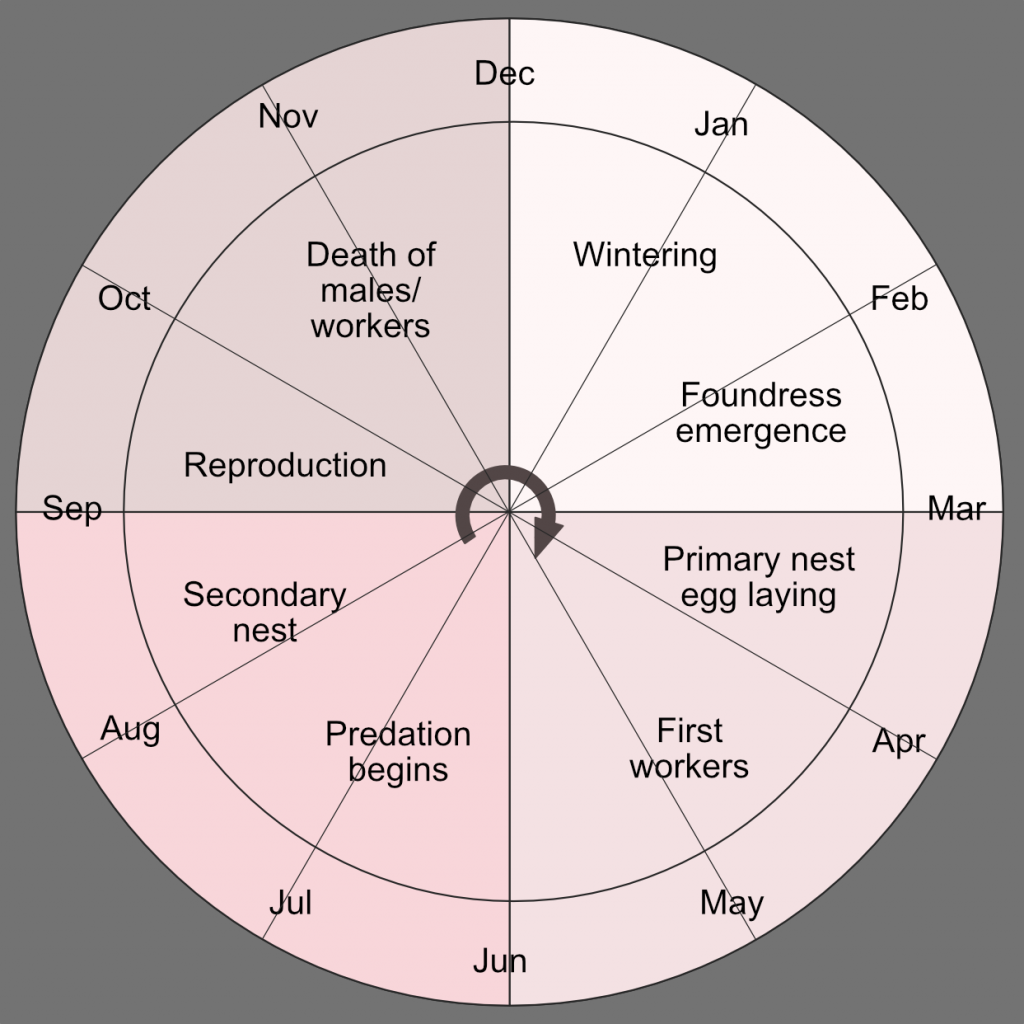
The life cycle diagram shows the development of the Asian hornet colony throughout the year. The timings are a rough guide only, as the variable UK climate will affect the development of the colony. More details can be found on the Asian hornet page of this website.
What do Asian hornets eat?
The information shown in the pie chart is based on a French study carried out in 2008-2010, and should be taken as an indication of possible predation in the UK. Asian hornets represent a serious threat to honeybees and other pollinators.
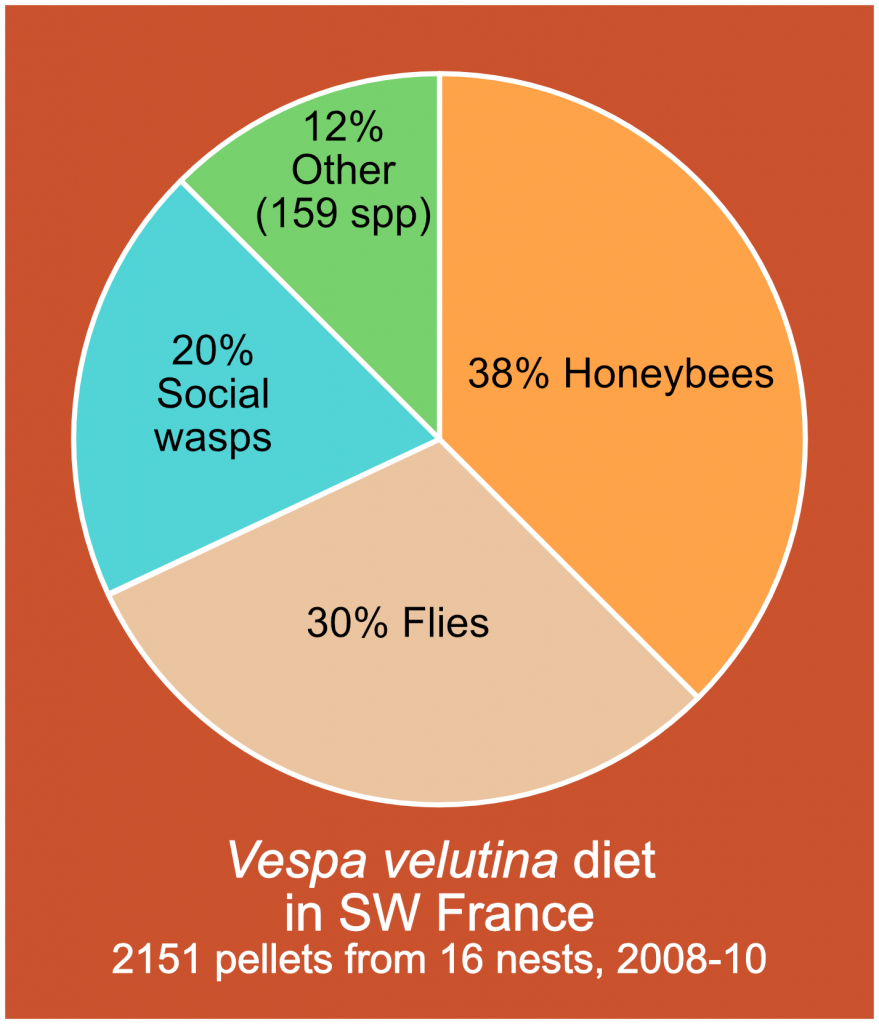
Asian hornets will ‘hawk’ in front of hives or near sites where insects forage e.g., near ivy in the autumn. Smearing the ivy with Sutera or other hornet attractant will improve the chances of attracting hornets. The hornet will grab an insect, land on a convenient branch nearby while it dismembers the insect leaving just the protein-rich thorax to take back to the nest.
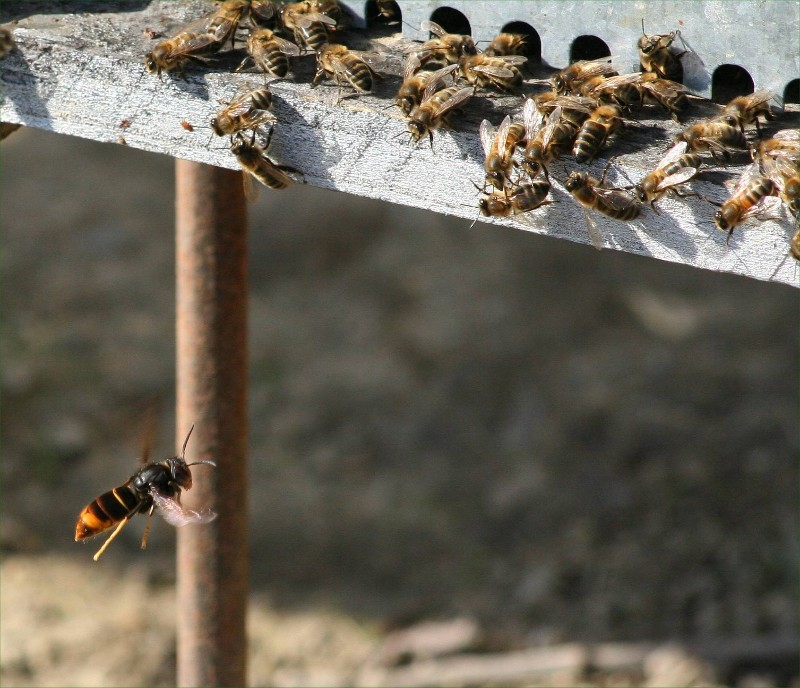
Nest location
From the experience gained to date in the UK, the nest site will be within just over a 1km radius of first sighting. As soon as a sighting is confirmed the NBU team will move into the area to set up bait stations. The local inhabitants need to be kept informed as to why bee-suited individuals are wandering round the area looking at the tree tops with binoculars. They also need to be informed of potential dangers.
By monitoring the bait stations, the direction the hornets take back to the nest site can be spotted and recorded. The time taken to return to the bait station also gives some indication of the distance to the nest. By cross referencing this information an approximate location will be indicated. The final step is to locate the nest visually.
Asian hornets are said to nest high in the tree tops but there are many contradictions to this advice. When searching for nests it is best to assume they could be at any height from ground level to tree top.
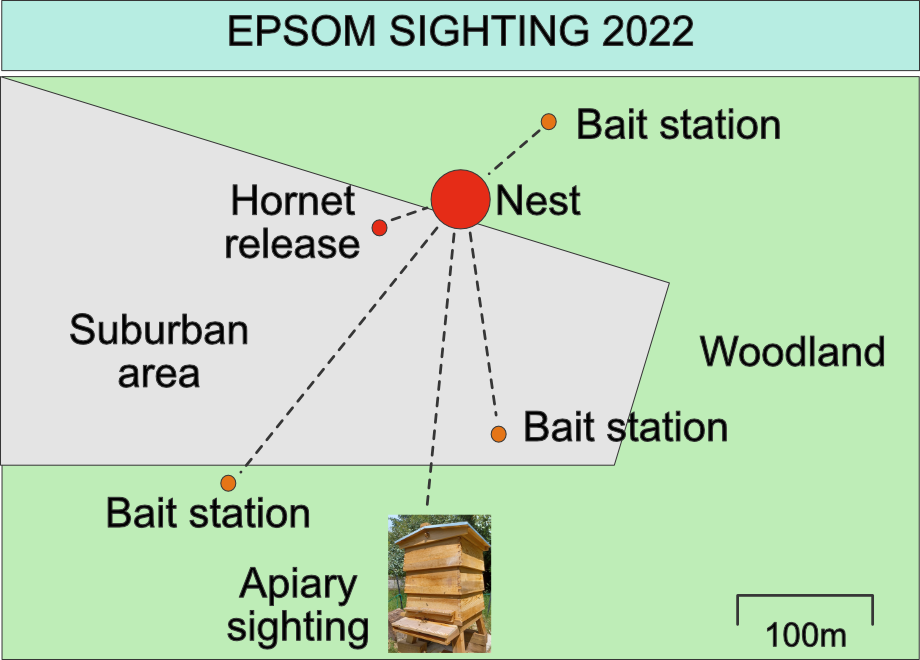
Each year there are thousands of false reports of Asian hornet sightings. Stephen urged us to use the Asian hornet app and ensure there is a photo of any suspect insect as it makes the job of monitoring easier.
Nest destruction and removal
Licenced specialists from FERA use a variety of methods to destroy the hornets, usually waiting until all the hornets are in the nest at night. Injecting poison into the nest from a safe distance is normally used. The nest can then be recovered and sent to the laboratory for diagnosis. This also removes the poison from the environment. On Jersey they have been experimenting with vacuum extraction of hornets from nests.
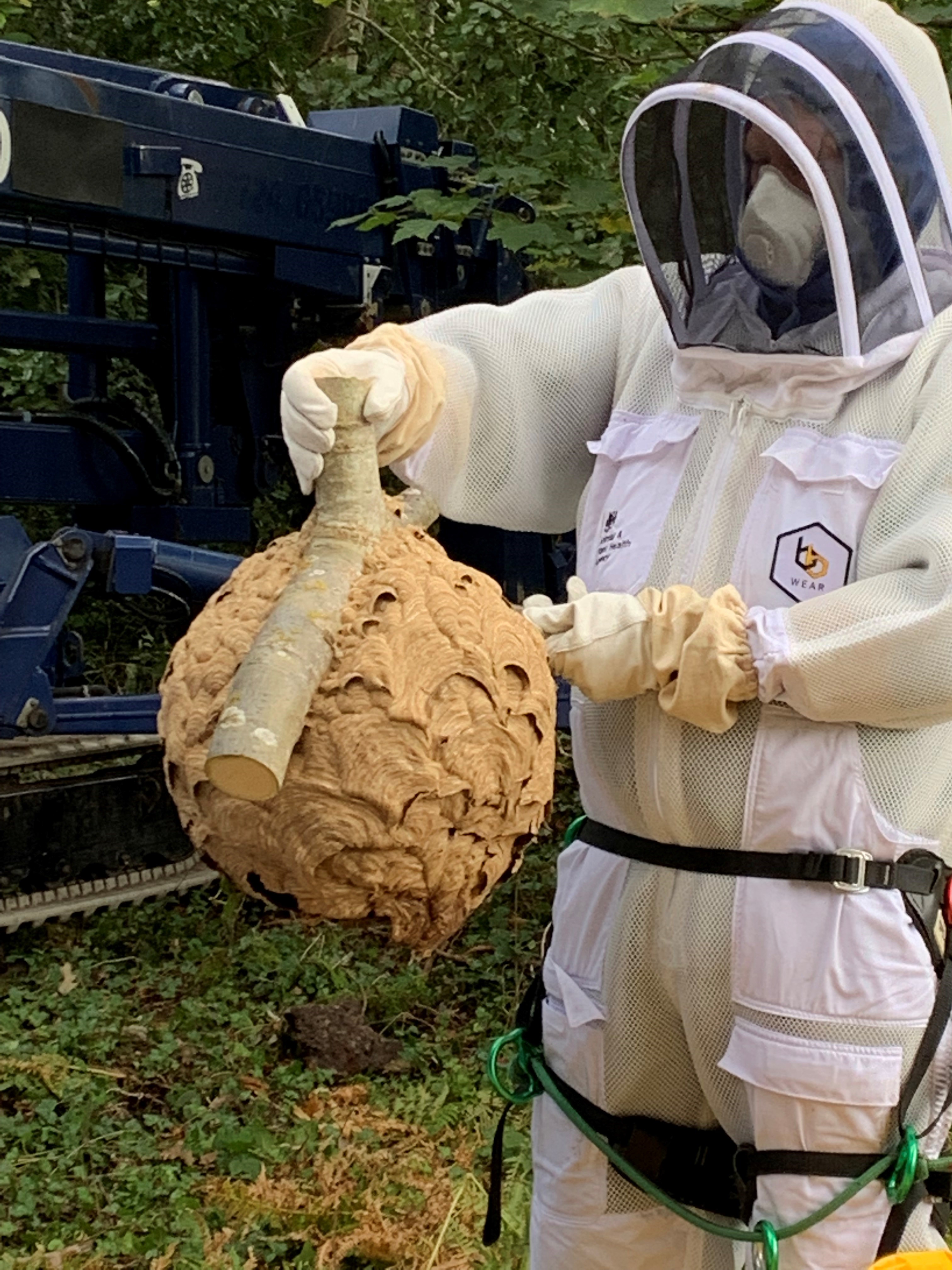
It should be noted that the exterior of an Asian hornet nest is extremely hard and durable. This may be the reason why there is no heat signature from a nest, making infra-red detection useless.
Note the sting-proof clothing! Image courtesy of Peter Davies, National Bee Unit.
Jersey experience
Stephen’s travels took him to Jersey where he experienced first hand the difficulties of dealing with the Asian hornet. The island is only 5 miles long by 9 miles wide so one might imagine it would be easy to find and destroy nests. This has not proved to be the case and Jersey currently faces the prospect of not being able to contain the infestation. The following diagram shows the four stages usually taken by an invasive species.
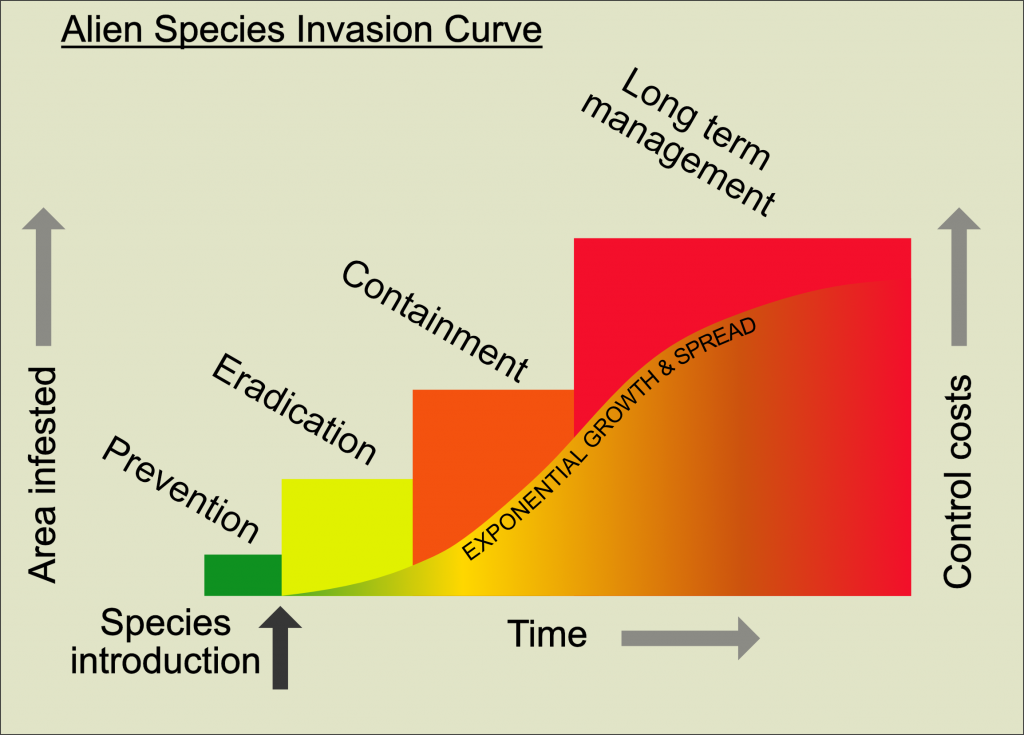
Where there is a known threat, the first step would be Prevention. In the UK this would take the form of sentinel apiaries, monitored by NBU. Confirmed sightings lead to the Eradication phase, which is where we are in the UK. When the alien species becomes established, we enter the Containment phase, with control costs rising. Finally, when Containment fails, the emphasis will be on Long Term Management. Jersey is approaching this phase as colony numbers rise (see Jersey website).
Bee defences
If the hornet becomes established in the UK, bees are more likely to show defensive behaviour. It has also been observed that some colonies exhibit ‘shimmering’ behaviour in response to Asian hornet hawking, as displayed by the giant honeybee, Apis dorsata, of southeast Asia.
Control measures
Bait traps offer an easy way for UK beekeepers to help their bees. Stephen pointed out that unintended by-catch of other pollinators was highly undesirable. This can be avoided by frequent checking of the trap. For an example of an Asian hornet bait trap see the Veto-pharma website.
There are also many other devices intended to reduce hornet predation, such as entrance guards, bats and racquets. The electric harp has some devotees, especially where the electricity can be supplied by photo voltaic cells.
We thank Stephen for a very informative talk covering all aspects of this potentially devastating threat to our bees. A timely reminder as the new beekeeping season starts!